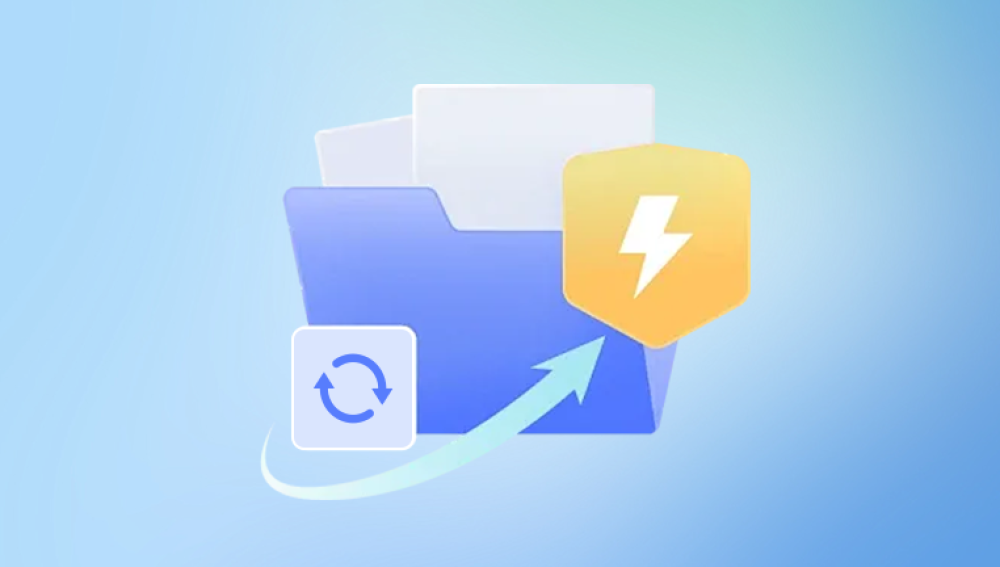Restoring a PowerPoint file that has been accidentally deleted, corrupted, or lost can be a challenging but not impossible task.
PowerPoint presentations are essential for creating impactful visual aids for meetings, lectures, and other professional or educational events. Losing such files can lead to frustration, especially if you’ve spent hours crafting the content. However, there are several ways to recover a lost or deleted PowerPoint file, whether it’s from your computer, cloud storage, or even a backup.
Common Causes of PowerPoint File Loss
Before diving into the recovery process, it’s essential to understand the common reasons behind PowerPoint file loss:
Accidental Deletion: Sometimes, a presentation might be deleted unintentionally.
Corruption: Files can become corrupted due to software crashes, improper shutdowns, or system errors.

Saving Errors: If PowerPoint crashes while saving, it can result in a loss of your most recent changes.
Hardware Failures: Problems with your hard drive, USB drive, or external storage can lead to file loss.
Virus or Malware: Malicious software can cause files to become inaccessible or damaged.
Methods to Restore a PowerPoint File
Here’s a step-by-step guide to restore a PowerPoint file in various scenarios:
1. Using AutoSave or AutoRecover
One of the most effective ways to recover an unsaved or lost PowerPoint file is through the AutoSave or AutoRecover feature. This feature automatically saves a temporary version of your presentation at regular intervals.
Steps to Use AutoRecover:
Open PowerPoint: Launch the PowerPoint application.
Go to the File Tab: In the upper left corner, click on the "File" tab.
Select Info: Under the File menu, select "Info".
Manage Versions: You will see an option called "Manage Versions" or "Recover Unsaved Presentations".
Choose Recover Unsaved Presentations: Click this option to view a list of unsaved files.
Select the Correct Version: If the PowerPoint file you’re trying to recover is listed, select it and click "Open".
Save the File: Once the file opens, save it to a secure location.
Tips:
AutoRecover only works if you’ve enabled it in your PowerPoint settings.
By default, AutoSave is set to every 10 minutes, but you can adjust this interval under PowerPoint’s "Options" menu.
2. Checking the Recycle Bin
Accidental deletions are common, and in many cases, deleted files can be found in the Recycle Bin.
Steps to Check the Recycle Bin:
Open the Recycle Bin: Double-click on the Recycle Bin icon on your desktop.
Search for the PowerPoint File: Browse or search for your PowerPoint file in the list.
Restore the File: Right-click on the file and select "Restore" to recover the file to its original location.
3. Recovering from Previous Versions (Windows)
Windows has a feature that allows you to restore previous versions of a file. If your PowerPoint presentation was saved on your local drive, you might be able to recover an earlier version.
Steps to Restore Previous Versions:
Navigate to the Folder: Go to the folder where the PowerPoint file was located.
Right-click on the Folder: Right-click on the folder and select "Properties".
Go to the Previous Versions Tab: Under the "Previous Versions" tab, you will see a list of available versions of files and folders.
Select a Version: Choose the version of the folder or file that contains the PowerPoint file you want to restore.
Restore the File: Click "Restore" to recover the file to its original location.
4. Using Cloud Backup Services (OneDrive, Google Drive, etc.)
If you were working on your PowerPoint presentation and saved it to a cloud storage service like OneDrive, Google Drive, or Dropbox, you may be able to recover a previous version of the file from the cloud.
Steps to Restore from OneDrive (for example):
Log into OneDrive: Open your web browser and go to the OneDrive website. Log in with your Microsoft account.
Find Your File: Navigate to the folder where the PowerPoint presentation was saved.
Check Version History: Right-click on the file and select "Version History" (OneDrive will keep a record of past versions of your files).
Restore a Previous Version: Select the version you want to recover and click "Restore".
Steps to Restore from Google Drive:
Go to Google Drive: Open Google Drive and log into your account.
Find the File: Locate the PowerPoint file in your Google Drive.
View File History: Right-click on the file and choose "Manage Versions" to see a list of previous versions.
Restore the File: Select the version you want to recover and click "Download" to restore it.
5. Using PowerPoint Recovery Tools
Drecov Data Recovery is a comprehensive software solution designed to help users recover lost, deleted, or corrupted files from various storage devices. Whether it’s a simple accidental deletion, a system crash, or a failed hardware device, Drecov Data Recovery offers a powerful yet user-friendly way to restore valuable data. With its intuitive interface, this software is accessible to both novices and experienced users alike, ensuring a seamless recovery process.
Key Features of Drecov Data Recovery
Wide File Format Support: Drecov Data Recovery supports a broad range of file types, including documents, images, videos, audio files, and emails. This makes it ideal for recovering a variety of content, whether you're looking to restore office documents, personal photos, or media files from different formats.
Multiple Storage Devices Supported: The software works with numerous storage devices, such as hard drives, USB flash drives, memory cards, and even external drives. Whether the files are stored on your computer, camera, or external storage device, Drecov Data Recovery can help you retrieve them.
Advanced Scanning Algorithms: Drecov Data Recovery employs cutting-edge scanning algorithms to locate lost or deleted files. The software can find files even on damaged or formatted drives by scanning deep into sectors that might not be accessible through normal means.
File Preview Functionality: One of the key features of Drecov Data Recovery is the ability to preview files before you actually recover them. This helps ensure that you are recovering the correct files, whether they are documents, images, or media files.
Repairing Corrupted Files: In addition to basic file recovery, Drecov Data Recovery offers tools to repair certain types of corrupted files. This is especially useful when dealing with damaged videos or images, where you need to restore the integrity of the file itself.
Multiple Recovery Modes: The software offers several recovery modes, including Quick Scan, Deep Scan, and Formatted Drive Recovery, each tailored to different levels of file loss. Whether you’ve just deleted a file or need to recover data from a formatted drive, Drecov Data Recovery has you covered.
Cross-Platform Support: Compatible with both Windows and macOS, Drecov Data Recovery ensures that it can be used across different devices and operating systems, making it a versatile solution for all types of users.
6. Recovering from Backup
If you regularly back up your files (either manually or using backup software), this could be the simplest way to recover your lost PowerPoint presentation.
Steps to Restore from a Backup:
Locate Your Backup: Find the backup location where your PowerPoint file is saved.
Search for the File: Search for the PowerPoint presentation within the backup files.
Restore the File: Once you’ve found the file, restore it to its original location or another folder on your computer.
7. Using a Data Recovery Service
If none of the methods above work, and the file is critically important, you might consider using a professional data recovery service. These services are equipped with specialized tools to recover data from damaged or corrupted hard drives.
Steps to Use a Data Recovery Service:
Research Recovery Services: Look for reputable data recovery companies with experience in recovering Office files.
Send Your Device: If the file is on a damaged drive or external device, send it to the recovery service.
Recovery Process: The recovery service will attempt to restore your PowerPoint file.
Receive Recovered Files: If successful, the service will provide you with a copy of the recovered PowerPoint file.
Tips to Prevent Future Data Loss
While restoring lost files is possible, preventing data loss is always better. Here are some tips to protect your PowerPoint files:
Use Cloud Storage: Save files to cloud services like OneDrive, Google Drive, or Dropbox for automatic backups and version history.
Enable AutoSave: Make sure AutoSave is enabled in PowerPoint so that temporary backups are created regularly.
Keep Backup Copies: Regularly back up your files to an external hard drive or other backup solutions.
Use Antivirus Software: Protect your files from malware and viruses that can cause data corruption.
Save Files Frequently: Get into the habit of saving your work frequently to avoid losing progress.




